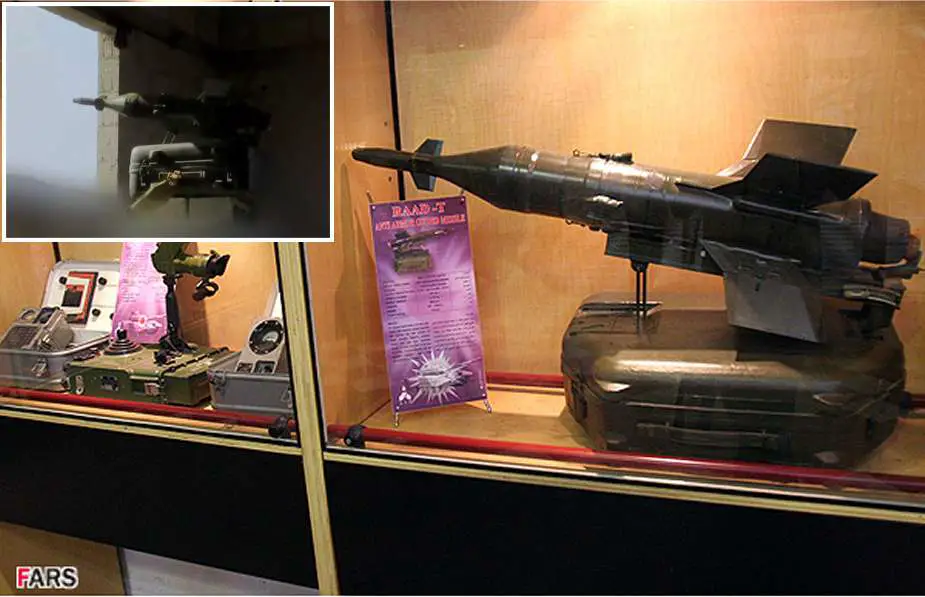Breaking news
Al Quds Brigade Deploys from Gaza Iranian-made RAAD-T Anti-Tank Missile in Attack on Israeli Target.
According to a video published on Social Networks, Al Quds Brigade, the military group of Islamic Jihad, the second-largest armed group in Gaza after Hamas, has used Iranian-made RAAD-T wire-guided anti-tank guided missile based on the Soviet 9M14M Malyutka (AT-3b Sagger) missile during the attack on Israeli target on October 7, 2023.
Follow Army Recognition on Google News at this link

The RAAD-T is an Iranian-made anti-tank guided missile based on the Russian AT-3 Sagger. (Picture source FARS News)
Iran has been accused of providing various forms of support to Hamas. One of the primary allegations is the supply of rockets, missiles, and other types of weaponry to the group. These weapons have been used by Hamas in its conflicts with Israel. Beyond just weaponry, there are suggestions that members of Hamas have received training from the Iranian Revolutionary Guard Corps (IRGC) or other Iranian entities. This training is believed to encompass military tactics, weapons use, and other forms of warfare.
In addition to military support, Iran has also been implicated in providing significant financial aid to Hamas. This financial backing is crucial for Hamas as it helps sustain its operations in the Gaza Strip. The delivery of this support, especially arms, is believed to be facilitated through various smuggling routes. These include intricate tunnels from Egypt's Sinai Peninsula into Gaza and maritime routes. The exact mechanisms and pathways for these deliveries are often complex and are typically the subject of intelligence operations.
The Iranian Raad-T anti-tank missile draws its origins from the Soviet 9M14M Malyutka, known by its NATO designation as the AT-3b Sagger. The Malyutka, a first-generation wire-guided missile, was a staple during the Cold War era, seeing use by various Soviet allies and client states.
Following the 1979 Iranian Revolution and the arms embargoes that ensued, Iran was compelled to develop its own indigenous defense capabilities. This drive led them to reverse-engineer several pieces of military hardware they had previously acquired or captured, including the Malyutka missile. The outcome of this initiative was the Raad missile system.
The RAAD-T missile has a range from 400 to 3,000 m, a notable enhancement over the original Russian Malyutka's range of around 2,000 meters. Like its Soviet predecessor, the Raad employs a wire-guided system. This system allows the operator to actively guide the missile towards its target, offering the ability to make adjustments mid-flight. One of the missile's standout features is its tandem-charge high-explosive anti-tank (HEAT) warhead. This design is particularly effective against modern armored vehicles, especially those equipped with explosive reactive armor. The missile can penetrate 400 mm of armor.
Over the years, while the foundational design of the Raad remains reminiscent of the Malyutka, Iran has introduced several modifications and improvements. These changes not only elevate its performance but also ensure it meets the specific operational demands of the Iranian armed forces. Given its capabilities, the Raad has proven to be an invaluable asset in asymmetric warfare scenarios, providing a significant advantage to forces that might otherwise be outgunned by adversaries with more advanced conventional weaponry.























